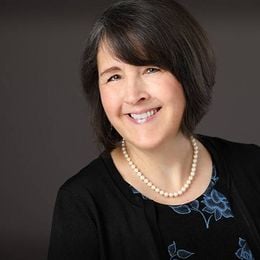What You Need to Know About COPD
Barbara Bush reportedly suffered from COPD. These are ways to slow its progress.
(Editor's note: Former first lady Barbara Bush, who died April 17, 2018 at age 92, was reported to have suffered from COPD. She had smoked for about 25 years before quitting in 1968, according to her memoir. This story was originally published in November 2015.)

Chronic obstructive pulmonary disease (COPD) is a progressive condition that makes it difficult for millions of Americans to breathe. It is the third leading cause of death in the U.S., but it is usually preventable and there are treatments available.
The best prevention: don’t smoke, or quit smoking. Five out of six people with COPD smoked – and smoking causes as many as nine out of 10 COPD-related deaths, according to the Centers for Disease Control and Prevention (CDC).
Barbara Bush wrote in her memoir that she knew she shouldn't smoke but had trouble quitting. While recovering from a minor surgery, a nurse found her smoking in her hospital room and "read me the riot act," she wrote. "She told me that I was addicted and a disgrace." That did it, and she quit for good on New Year's Day of 1968, she wrote.
While there may be confusion around the term, awareness of COPD has increased in the last decade and a half, said Gerard Criner, M.D., professor and chair of the Department of Thoracic Medicine and Surgery at the Lewis Katz School of Medicine at Temple University in Philadelphia.
What Is COPD?
COPD is a term that refers to chronic lung diseases, primarily chronic bronchitis and emphysema. Most patients have both. In addition, doctors have seen an overlap of asthma and COPD in many individuals, Criner said.
COPD is a disease that develops with age; it’s most often seen in people 40 and above.
With COPD, less air can move in and out of the airways, either because they become less elastic, they become inflamed, they produce more mucus or the walls between the air sacs break down, according to the National Heart, Lung, and Blood Institute.
Regardless of what’s happening, the result is that a person with COPD has less oxygen coming into the bloodstream. This can result in growing fatigue and shortness of breath. Eventually, the disease can prevent an individual from being active; it is a major cause of disability.
In 2010, COPD killed nearly 135,000 Americans, the CDC reported. In comparison, the American Lung Association estimates that 158,000 deaths in 2015 will be caused by lung cancer.
COPD in Women
More women die of the disease than men. There are several possible reasons for this, according to the American Lung Association. The cigarette industry began an aggressive marketing push to women in the late 1960s, and those boomer women are now showing chronic diseases like COPD as they age. The smaller size of women’s lungs, and the presence of estrogen, makes them more vulnerable to smoke.
And doctors often miss COPD in women, because it has traditionally been considered a man’s disease, the American Lung Association said.
Symptoms of COPD
Pay attention to the following signs of COPD and get medical help. According to the CDC, they are:
Early-stage symptoms:
- A nagging cough
- Shortness of breath, especially with exertion
- Wheezing
- Tightness in the chest
Later-stage symptoms:
- Having trouble catching your breath or talking
- Blue or gray lips and/or fingernails (a sign of low blood-oxygen levels)
- Confusion
- A very fast heartbeat
- Swelling in the feet and ankles
- Weight loss
Treatments for COPD
Criner of Temple University encouraged people with symptoms of COPD to go to a doctor – and get a second opinion of you are not satisfied. The physician will likely do a spirometry test and offer help to kick the smoking habit if they have not already quit.
Though the disease is very serious, there is a range of therapies that can help, he said. Those include inhalers, either short- or long-acting; medications in pill form; oxygen therapy; and physical or occupational therapy.
In addition, people with COPD – and anyone else who is 55-plus and has a lung disease – should get both a flu vaccine and a pneumonia vaccine, Criner said.


